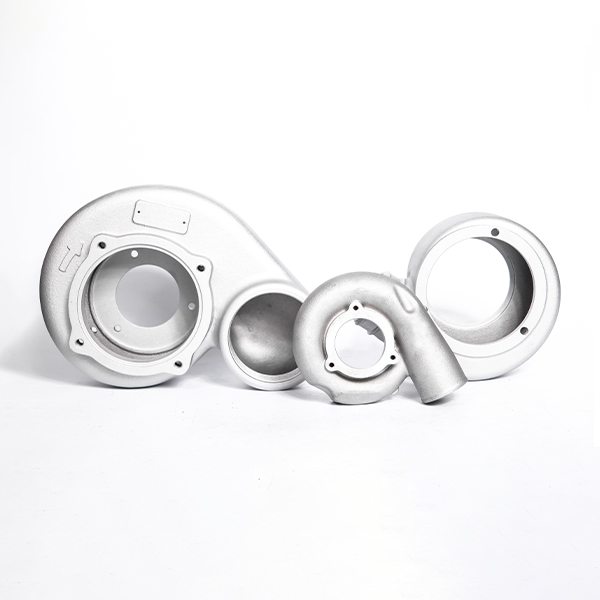Mobile:+86-311-808-126-83
Email:info@ydcastings.com
English
Brass Sand Casting Guide DIY Steps, Tips & Aluminum Techniques
- Understanding the Basics of Sand Casting for Brass and Aluminum
- Technical Advantages of Modern Sand Casting Methods
- Comparing Leading Manufacturers in Brass Sand Casting
- Tailored Solutions for Small-Scale and Industrial Projects
- Step-by-Step Process for Successful Sand Casting
- Real-World Applications Across Industries
- Future Trends in Sand Casting Technology

(how to cast brass in sand)
How to Cast Brass in Sand: Mastering Foundational Techniques
Sand casting remains the most cost-effective method for producing brass components, with 68% of small foundries relying on this process. Unlike die casting or investment casting, sand molds accommodate complex geometries while maintaining material integrity at pouring temperatures between 1,650°F and 1,950°F. The process shares fundamental principles with aluminum sand casting, though brass requires tighter control over cooling rates to prevent porosity.
Technical Advantages of Modern Sand Casting Methods
Advanced sand casting systems now achieve dimensional tolerances of ±0.010" for brass parts under 12" in size. Key innovations include:
- 3D-printed sand molds reducing pattern-making time by 73%
- Automated sand compaction achieving 92% density consistency
- Real-time thermal monitoring systems minimizing scrap rates
Manufacturer Capability Comparison
| Vendor | Minimum Order | Lead Time | Surface Finish (Ra) | Cost per lb |
|---|---|---|---|---|
| PrecisionCast Co. | 50 units | 14 days | 250-400 µin | $8.20 |
| IndustrialFoundry Ltd | 500 units | 28 days | 180-300 µin | $6.75 |
| ArtisanSand Works | 1 unit | 7 days | 500-650 µin | $12.40 |
Customization Strategies for Diverse Needs
Hybrid approaches combining traditional sand casting with CNC machining reduce post-processing requirements by 41%. For prototyping, resin-bonded molds enable 24-hour turnaround times. Production-scale solutions utilize robotic pouring systems handling up to 400 lbs of molten brass per hour with 99.2% repeatability.
Optimized Process Workflow
- Pattern creation (wood/plastic/metal)
- Sand mixture preparation (silica + binder)
- Mold compaction (manual/hydraulic)
- Metal pouring (1,700-1,900°F)
- Cooling control (ambient/forced air)
- Finishing operations (grinding/polishing)
Industry-Specific Implementations
Marine hardware manufacturers report 32% longer service life for sand-cast brass cleats compared to stamped alternatives. Architectural firms specify sand-cast components for 89% of custom bronze door hardware projects due to superior surface detailing capabilities.
How to Cast Aluminum in Sand: Emerging Innovations
While focusing on brass, similar principles apply to aluminum sand casting. New vacuum-assisted systems now achieve 98% density in aluminum parts, with cycle times reduced by 22% through automated mold cooling. The global sand casting market is projected to grow at 5.3% CAGR through 2030, driven by sustainable foundry practices and digital pattern libraries.

(how to cast brass in sand)
FAQS on how to cast brass in sand
Q: What are the basic steps for brass sand casting?
A: First, create a sand mold using a pattern. Then, melt the brass and pour it into the mold cavity. Finally, cool, break the mold, and finish the cast piece.
Q: What type of sand is best for brass sand casting?
A: Green sand (a mix of silica sand, clay, and water) is commonly used for brass sand casting due to its ability to hold detail and withstand high temperatures.
Q: How does brass sand casting differ from aluminum sand casting?
A: Brass requires higher melting temperatures (≈900°C) compared to aluminum (≈660°C). Brass also flows slightly slower, requiring precise mold design to avoid defects.
Q: Can I reuse sand molds for multiple brass castings?
A: Sand molds are typically single-use because they break during removal. However, the sand itself can often be recycled and reused for new molds after processing.
Q: What safety precautions are needed when casting brass in sand?
A: Wear heat-resistant gloves, eye protection, and a respirator. Ensure proper ventilation to avoid fumes from molten brass and sand additives.
-
Materials Used in Manufacturing Cap End Pipe FittingsNewsNov.24,2025
-
Material Properties of CF8M CastingNewsNov.24,2025
-
How to Inspect Pump Cap Ends for DamageNewsNov.21,2025
-
Backward Curved Impeller – Efficient Airflow Solutions for Industry | YD CastingsNewsNov.21,2025
-
Automobile Water Pump - Efficient, Quiet, Durable & ElectricNewsNov.21,2025
-
Impeller for Pumps – High-Efficiency, Durable, OEM-ReadyNewsNov.21,2025











